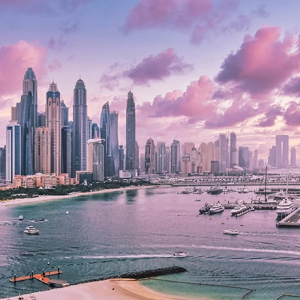The United Arab Emirates’ Dh20 banknote is more than just a means of exchange; it serves as a symbol of the nation’s heritage, culture, and natural beauty. One of the most intriguing features of this note is the depiction of ‘Sammah’, a term that has captivated the curiosity of many. Recently, a UAE-based photographer, deeply passionate about documenting the country’s landscapes and traditions, shed light on the meaning behind ‘Sammah’ and its cultural significance.
Decoding ‘Sammah’: A Reflection of UAE’s Landscape
The word ‘Sammah’ in Arabic embodies a sense of vastness, openness, and generosity. On the Dh20 note, it is represented through a stunning visual of desert dunes and indigenous flora, particularly the ghaf tree, which holds special significance as the national tree of the UAE.
According to the photographer, ‘Sammah’ refers to a desert region known for its breathtaking dunes, unique wildlife, and deep cultural roots. The presence of ‘Sammah’ on the Dh20 note was a deliberate choice, aiming to highlight:

- The raw beauty of the UAE’s desert landscapes.
- The importance of preserving the nation’s environment.
- The connection between Emiratis and their desert heritage.
The Symbolism of ‘Sammah’ on the Dh20 Note
The UAE has long incorporated cultural and historical elements into its currency, making each banknote a representation of the country’s identity and values. The Dh20 note, redesigned in recent years, features advanced security measures and eco-friendly materials, but its most compelling aspect remains its cultural narrative.
The photographer’s insights shed light on three key elements of the ‘Sammah’ depiction:

1. Golden Desert Dunes: The Story of Resilience
The rolling dunes of ‘Sammah’ on the Dh20 note symbolize the UAE’s rich desert heritage. Historically, Bedouin tribes relied on the desert for survival, and their way of life was deeply connected to the environment.
- The desert dunes serve as a reminder of the challenges Emiratis faced before the nation’s modernization.
- The depiction on the note encourages appreciation for the UAE’s natural beauty and environmental conservation efforts.
2. The Ghaf Tree: A National Treasure
Standing tall amid the dunes is the ghaf tree, known for its remarkable ability to survive in harsh desert conditions. Its presence on the Dh20 note holds profound meaning:
- The ghaf tree represents stability and resilience, much like the UAE itself.
- It is a symbol of sustainability, aligning with the UAE’s climate action initiatives.
- The tree has been central to Emirati traditions, providing shade, shelter, and sustenance for generations.
3. ‘Sammah’: A Cultural and Environmental Symbol
The choice to feature ‘Sammah’ on the Dh20 note goes beyond its visual appeal. It reflects values deeply rooted in Emirati culture, including:
- Hospitality and generosity, qualities synonymous with the UAE.
- Spirituality and tranquility, as the desert has long been a place of reflection for Emiratis.
- Environmental awareness, reminding citizens of the importance of protecting their natural surroundings.
The Photographer’s Perspective: Why ‘Sammah’ Matters Today
The UAE-based photographer, known for capturing the nation’s landscapes, emphasizes that the Dh20 note serves as a tribute to the UAE’s history and natural heritage. Through photography, they have documented how ‘Sammah’ remains an integral part of the country’s identity.
A Glimpse into the Past
Long before skyscrapers and modern infrastructure, the desert was the heart of Emirati life. The Bedouins, the earliest inhabitants of the region, adapted to the harsh environment, relying on the ghaf tree, camels, and date palms for survival.
- The depiction of ‘Sammah’ on the Dh20 note is a tribute to this era, honoring the resilience and adaptability of Emirati ancestors.
- It serves as an educational tool for younger generations, encouraging them to understand and respect their heritage.
Encouraging Environmental Conservation
With the UAE taking significant steps toward sustainability, the ‘Sammah’ depiction plays a crucial role in raising awareness.
- The government has launched conservation initiatives to protect the desert ecosystem.
- By showcasing the ghaf tree and dunes on the Dh20 note, authorities hope to inspire citizens to appreciate and preserve their natural surroundings.
- The note reminds people that despite rapid urbanization, the desert remains a key part of the nation’s identity.
A Symbol of the UAE’s Future
The UAE has positioned itself as a global leader in innovation, sustainability, and cultural preservation. The Dh20 note’s design reflects this balance between tradition and progress.
- The modern banknote incorporates cutting-edge security features, while still honoring historical and environmental elements.
- The depiction of ‘Sammah’ aligns with the UAE’s vision of preserving its cultural roots while embracing a sustainable future.
Public Reactions: How ‘Sammah’ Connects with the Nation
Since the photographer’s insights were shared, there has been an overwhelming response from UAE residents. The idea that currency is more than just money—it is a storyteller of a nation’s past, present, and future—has resonated deeply.
- Emiratis feel a profound connection to the imagery, as it reflects their heritage, values, and identity.
- Expats and tourists see the note as an artistic representation of the UAE, making them more curious about the country’s traditions.
- Environmentalists and conservationists have used the Dh20 note to spark discussions about preserving the UAE’s unique desert ecosystem.
Final Thoughts: A Banknote That Tells a Story
The Dh20 note stands as a testament to the UAE’s cultural and environmental heritage. Through the eyes of a UAE-based photographer, the mystery of ‘Sammah’ has been unveiled, offering a deeper understanding of the country’s natural wonders and traditions.
As the UAE continues to evolve into a global leader, the Dh20 note remains a symbol of the country’s journey—from its vast deserts to a modern metropolis—while staying true to its roots.
Do follow Uae stories for more Updates
Dubai Stadium Implements Strict Spectator Rules for Champions Trophy 2025













